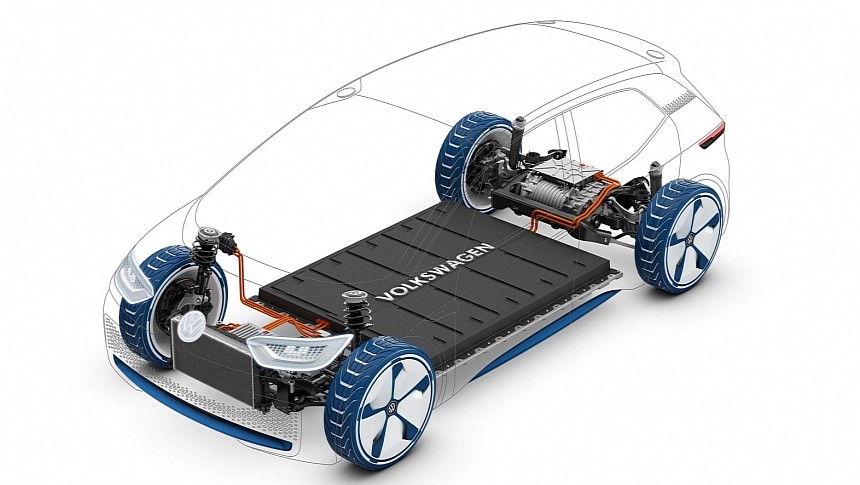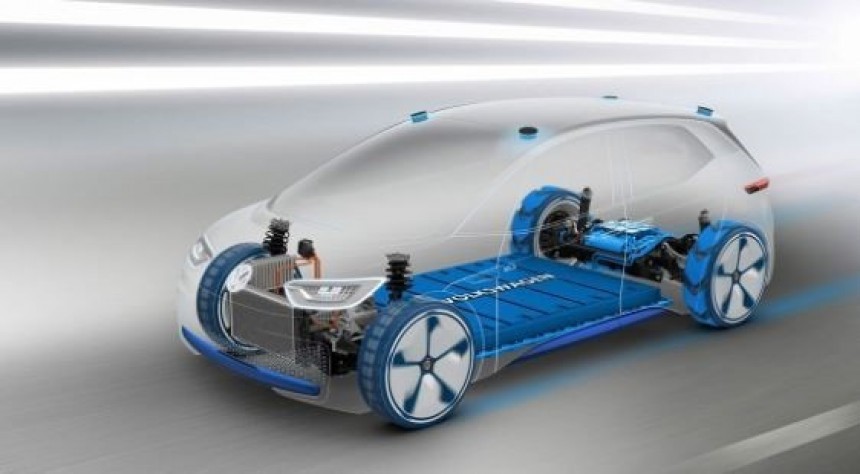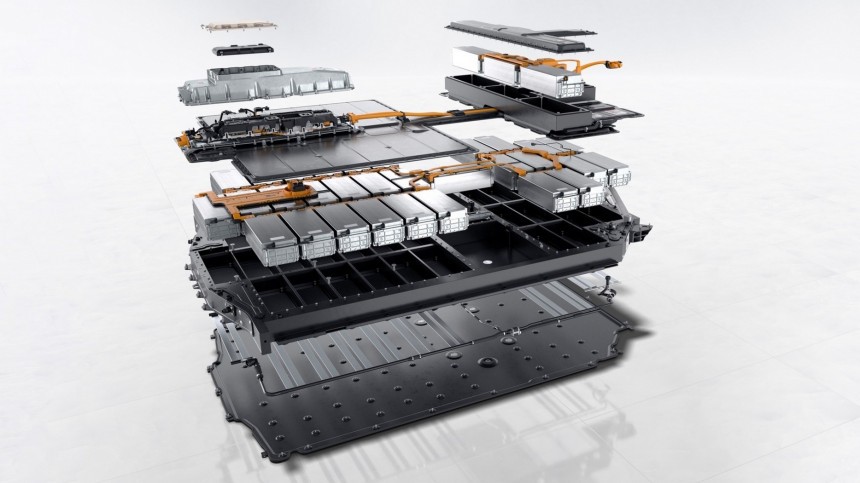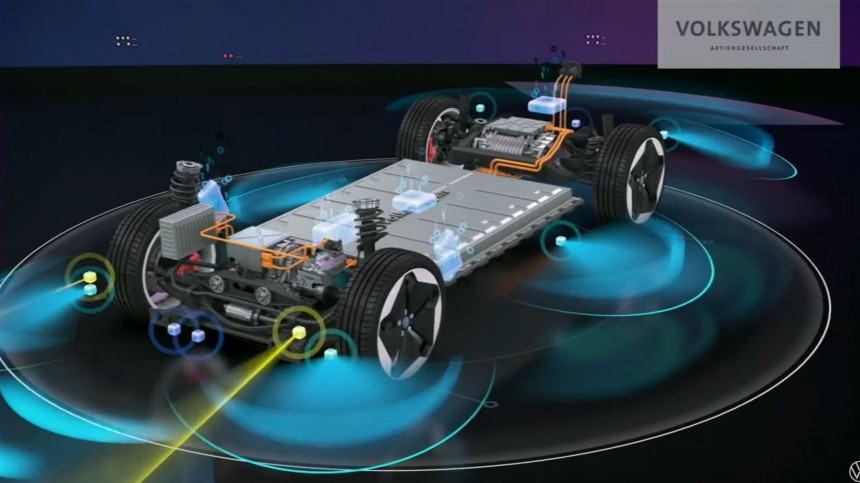On August 12, I proposed a deeper discussion about how automakers establish the range of their vehicles. Although that is a much more predictable process in Europe than it is in the US, the truth is that WLTP ranges are also difficult to match in cold weather or other harsh conditions for battery electric vehicles (BEVs). How do battery pack buffers affect that? That's what I tried to discover by asking four automakers about their strategies: Volkswagen, Ford, General Motors, and BMW. Sadly, only one company cared to explain that a bit, but it led me to wonder if there even is something that we can call a buffer.
Ford told me it would investigate what it could share and did not get back to me so far. General Motors just used the example I gave to say it has not provided details about the vehicle I mentioned. I tried using a hypothetical example, but it did not work. BMW never got back to me, but Volkswagen sent me a fairly detailed insight on everything involved with determining a BEV range. Sadly, some questions were still left unanswered.
Volkswagen explained that its battery suppliers have to deliver the goods based on gross energy content. The automaker checks that through a standardized test procedure that gives it the nominal capacity. That's the energy content the cell manufacturer guarantees, and it is usually a bit higher than the minimum Volkswagen requires: the delivered batteries range from 101% to 103%.
After the battery pack is assembled, something inherent to these components starts to unfold: the individual cells that compose it may present different states of charge (SOC). In other words, some of them may reach maximum charge before others. If the battery pack kept on getting electricity, it would damage the fully charged cells. This imbalance is the first reason for the battery pack never to use the total capacity of its individual cells.
With that, the battery pack will also never fully discharge: the cells with more juice will keep some of it when the ones that were not wholly charged run out of energy. That's the beginning of what people consider a buffer, something destined to extend the battery pack's lifespan. That's a more than positive way to frame something that is necessary for the component not to face a serious failure. Without these precautions, the battery pack would not last for long.
The SOC window that gives enough energy for the electric motors to work is also a limit. On top of that, Volkswagen also said it establishes the maximum state of charge for the battery pack as "a few percent below 100% for component protection reasons." The idea is to prevent inaccuracies that would fry the component if the maximum charge was exceeded. This would be the closest description to what we now call a battery pack buffer.
The resulting capacity after all these small restrictions is called net value, which the German carmaker discloses for its BEVs. If you take the ID.4 Pro Performance as an example, Volkswagen informs that it has 77 kWh, not the 82 kWh of gross capacity that the battery pack actually presents. These 5 kWh represent 6.1% of all the energy the high-voltage accumulator could theoretically store. You know the story: little strokes fell great oaks, penny and penny laid up will be many, and so forth. Confusingly, the expression for net energy capacity that Volkswagen uses on its German website is Nennwert netto, which translates as nominal value net. Nominal or net, right? It is the net of the nominal value.
Volkswagen also mentioned that battery packs have another capacity-measuring path called Usable Battery Energy (UBE). This method calculates the total energy drawn from the component in the tests that establish the WLTP range of the BEV. The UBE does not match the net energy content: it can be higher or lower. Due to these variations, the German carmaker prefers to disclose the nominal capacity, which does not make much sense. I asked the company about that but got no reply. I suspect the spokesperson made a mistake and said nominal instead of net, but that's what they told me, so…
This is not the only thing I wanted to ask the company. It would be interesting to understand how much each of these limits weighs in establishing the net energy capacity. In other words, which one penalizes it the most? Is it the disbalance issue, the percentage limitation, or the SOC window?
Above all, the deal was understanding why BEV makers do not use the gross capacity of battery packs. It is not a voluntary measure, as talking about a buffer may suggest: it is unavoidable. Miss any of these limits, and battery packs will have to be replaced under warranty in large quantities. No one will unlock them one day and improve the range, as some BEV owners seem to hope.
This may be the reason for some companies to try to overestimate the ranges as Tesla did with its cars. Volkswagen's BEVs did not fail to achieve their EPA ranges, but the lower ranges they officially present may have been a discouraging factor for those willing to own an electric car. If that were the case, it would be a pity that customers were choosing between credible figures and others that no automotive journalist managed to repeat. Would Volkswagen consider presenting even lower – but more feasible – numbers, such as those the vehicles get in the winter, traveling uphill, or towing anything? I seriously doubt it, as much as that would be the right thing to do.
Volkswagen explained that its battery suppliers have to deliver the goods based on gross energy content. The automaker checks that through a standardized test procedure that gives it the nominal capacity. That's the energy content the cell manufacturer guarantees, and it is usually a bit higher than the minimum Volkswagen requires: the delivered batteries range from 101% to 103%.
After the battery pack is assembled, something inherent to these components starts to unfold: the individual cells that compose it may present different states of charge (SOC). In other words, some of them may reach maximum charge before others. If the battery pack kept on getting electricity, it would damage the fully charged cells. This imbalance is the first reason for the battery pack never to use the total capacity of its individual cells.
The SOC window that gives enough energy for the electric motors to work is also a limit. On top of that, Volkswagen also said it establishes the maximum state of charge for the battery pack as "a few percent below 100% for component protection reasons." The idea is to prevent inaccuracies that would fry the component if the maximum charge was exceeded. This would be the closest description to what we now call a battery pack buffer.
The resulting capacity after all these small restrictions is called net value, which the German carmaker discloses for its BEVs. If you take the ID.4 Pro Performance as an example, Volkswagen informs that it has 77 kWh, not the 82 kWh of gross capacity that the battery pack actually presents. These 5 kWh represent 6.1% of all the energy the high-voltage accumulator could theoretically store. You know the story: little strokes fell great oaks, penny and penny laid up will be many, and so forth. Confusingly, the expression for net energy capacity that Volkswagen uses on its German website is Nennwert netto, which translates as nominal value net. Nominal or net, right? It is the net of the nominal value.
This is not the only thing I wanted to ask the company. It would be interesting to understand how much each of these limits weighs in establishing the net energy capacity. In other words, which one penalizes it the most? Is it the disbalance issue, the percentage limitation, or the SOC window?
This may be the reason for some companies to try to overestimate the ranges as Tesla did with its cars. Volkswagen's BEVs did not fail to achieve their EPA ranges, but the lower ranges they officially present may have been a discouraging factor for those willing to own an electric car. If that were the case, it would be a pity that customers were choosing between credible figures and others that no automotive journalist managed to repeat. Would Volkswagen consider presenting even lower – but more feasible – numbers, such as those the vehicles get in the winter, traveling uphill, or towing anything? I seriously doubt it, as much as that would be the right thing to do.



























